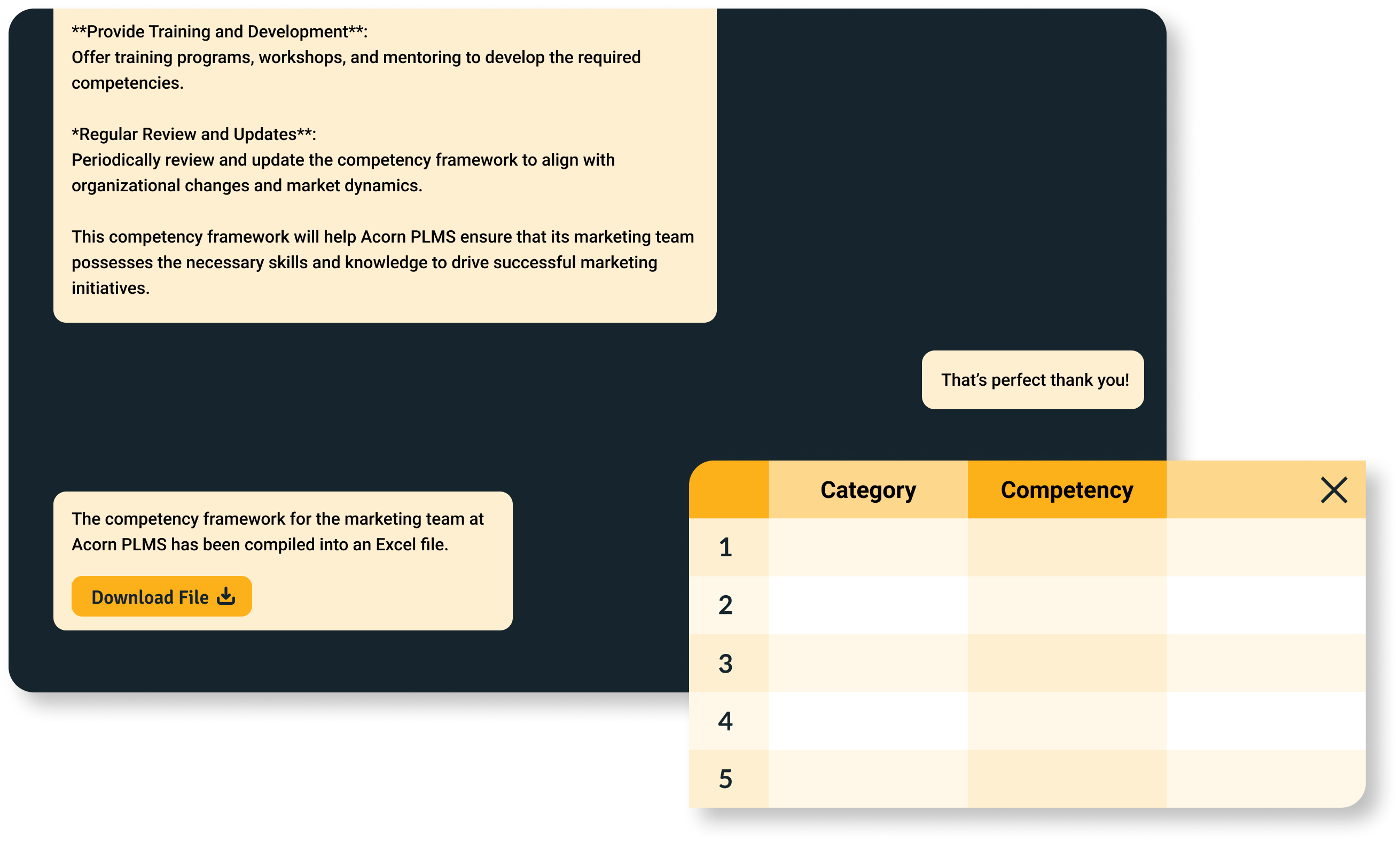Capability vs. Ability: What’s the Difference?
Reading Time:

Lead the pack with the latest in strategic L&D every month— straight to your inbox.
SubscribeCapability and ability both underpin business success in their own ways, but what distinguishes them?
In workforce development, words like skill, proficiency, competence, ability, and capability are often thrown around as if they’re interchangeable. They’re not—and that confusion matters. If you don’t distinguish between ability and capability, you risk missing the bigger picture of how individuals and organizations actually perform.
In this blog, we’ll break down the key differences between ability and capability, and show you how to build expertise in the capabilities that matter most to your business.
What is ability?
Ability refers to being able to do something that is typically innate (for example, verbal communication). That’s different from a skill, which is usually learned and practiced (like coding, leading a team, or running a campaign). Abilities tend to sit underneath skills, providing the raw potential that skills build on.
What is a capability?
Capabilities are bigger, broader, and more strategic. They’re the mix of skills, knowledge, tools, processes, behaviors—and yes, abilities—that combine to deliver organizational objectives.
Capabilities can be:
- Job-specific (functional or human capabilities, like stakeholder engagement or financial analysis)
- Organizational (business capabilities, like change management or innovation)
Where abilities are individual attributes, capabilities are the structured resources you can align to roles, teams, and strategy.
What makes abilities and capabilities different?
Ability and capability differ from each other in three major ways.
- Scope
- Long- vs. short-term strategy
- Context.
Scope
A capability is a collection of skills, knowledge, tools, processes, behaviors, and abilities. An ability, on its own, is one small piece of that puzzle. Overall, a capability is a comprehensive set of resources that individuals and organisations can utilise to achieve specific objectives, but an ability is only a small aspect that makes up a capability, and therefore has a smaller scope in the big picture.
This isn’t to say that ability is useless. You can enhance capability by honing and aligning individual ability with capabilities and business goals, but the scope is too broad to work the other way.
Strategy
Think of ability and capability as having individual vs. collective use cases. Ability focuses more on the individual’s proficiency when performing a task. They can be developed in the short term, honing in on individual talent.
Capability, on the other hand, is both individual and organizational—and always developed with a long-term view. It’s about building a workforce that can adapt, perform, and transform the organization over time.
Context
Abilities are relatively stable. You might be a good listener at 20 and 50. Capabilities, however, are context-specific and dynamic. They evolve as industries, roles, and strategies change.
Take verbal communication. As an ability, it can improve over time. But the way it shows up in different leadership capabilities varies: the communication style for conflict management is very different from what’s needed for coaching and mentoring.
How to develop capabilities in the workplace
The best way to develop capabilities in the workplace depends on several factors, including your business goals, industry, and the specific business function. Some examples of methods you can use to build capability in your organisation include:
Invest in a knowledge management system
When we talk about a knowledge management system, we’re referring to a software tool used to organise documentation and information in an accessible location for employees. You might think of a traditional learning management system (LMS) here, and you’d be right. An LMS stores and manages learning content and measures learning completion.
But to really make sure your capability-building initiatives are working, you need to measure how individuals perform after training is complete. This is why we pioneered the first performance learning management system (PLMS)—to codify capabilities, link learning directly to them, and track how development translates into business outcomes.
On-the-job training
You can get employees to sit through formal training exercises, but you’ll get more bang for your buck by embedding learning in the flow of work. It’s cost-effective, flexible, and immediately relevant. Coaching and mentoring are classic examples—both reinforce desired behaviors and provide real-time correction.
And because on-the-job training occurs, well, on the job, you can do away with additional costs in travel, guest speakers, conferences, and days off work. It’s cost-effective, flexible, and, most importantly, immediately relevant.
Formal coaching
Formal coaching is structured and time-bound. It has clear outcomes, scheduled sessions, and a defined start and finish. Because progress is tracked, it’s especially effective for building targeted capabilities like decision-making, communication, or leadership presence in a measurable way.
Informal coaching
Informal coaching happens in the flow of work. It’s less about scheduled sessions and more about everyday feedback loops—quick conversations, nudges, and course corrections. Done well, it reinforces learning in context and builds capability faster as employees apply lessons immediately.
Mentoring
Mentoring pairs employees with more experienced colleagues to share knowledge and perspective. Unlike coaching, which often focuses on specific outcomes, mentoring is broader—helping employees navigate career paths, grow confidence, and develop capabilities such as problem-solving, collaboration, and strategic thinking.
Formal internal courses
This is probably the most obvious thing that springs to mind when you think of training: A classroom-like environment where an educator or guest speaker addresses the class and imparts knowledge. These learning environments can be ongoing or one-time, and make it easier to train employees in certain capabilities that are essential knowledge for multiple roles, decreasing time to proficiency.
It’s especially helpful if you have multiple employees who need the same training at once. For example, say you’ve got a group of new or emerging leaders, and you want to build their leadership capability. You can use an internal course to roll out uniform leadership training so you’ll have a group of ICs ready for succession planning. The classroom situation also allows them to take advantage of social learning, where they can validate concepts and thinking with one another and build collaboration and problem-solving skills.
Of course, even if you’re using a one-time internal course, you can’t just leave it there. As we said, capability development is a long-term investment. A one-time internal course is essential for getting a foot in the door of capability building, but still requires follow-up to ensure knowledge is retained, rather than lost over time.
Key takeaways
Understanding the distinction between ability and capability matters for any learning and development strategy.
- Ability is the individual’s innate potential and can be honed in the short term
- Capability encompasses ability plus skills, knowledge, processes, and behaviors—and must be continuously developed to deliver organizational success.
Building abilities may help individuals perform. Building capabilities transforms organizations.

Build capabilities today that drive your organization tomorrow. Done in minutes with our Capability Assistant.
BUILD YOUR FRAMEWORK